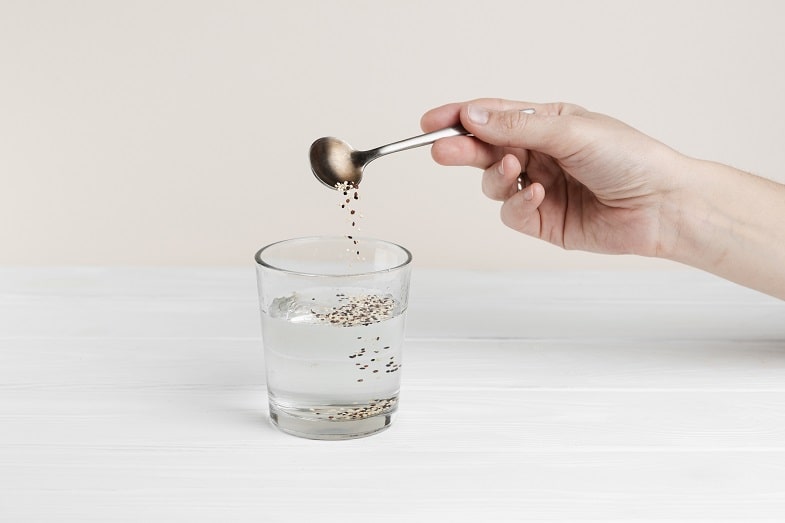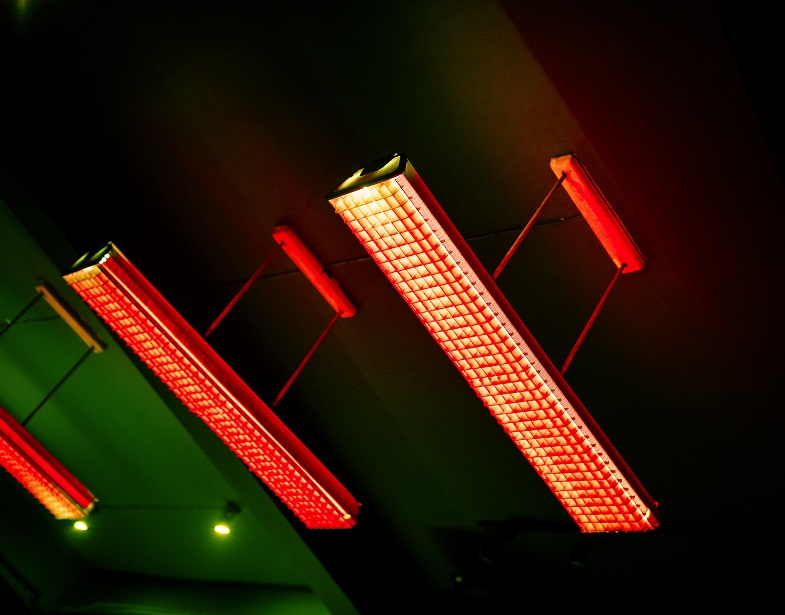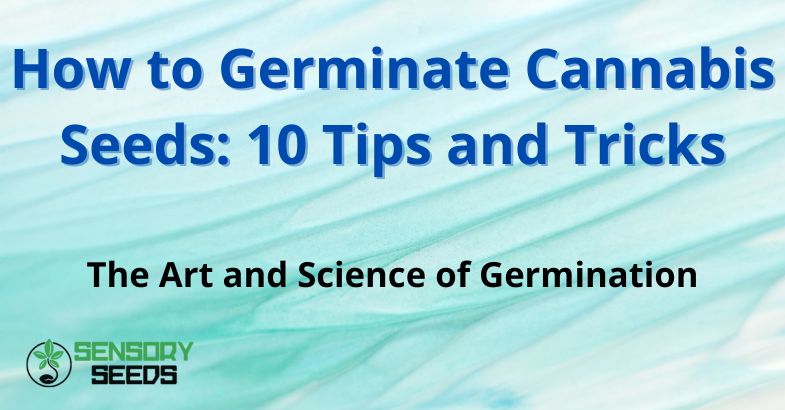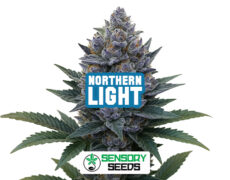Published on: 08/08/2025
The Art and Science of Germination
In the world of cannabis seed cultivation—whether you’re working with ganja seeds, marijuana seeds, or carefully selected genetics from SensorySeeds—the germination phase is one of the most critical and decisive steps. It’s from this initial moment that the plant begins to take shape, its productive potential is set, and the foundation is laid for a high-quality harvest.
While germinating cannabis seeds might seem like a simple task, it can actually present a number of challenges. Issues such as incorrect temperature, improper water usage, or unsuitable techniques can hinder the process.
In this article, we’ll explore why this stage can be more complex than expected and share SensorySeeds’ 10 top tips for successful germination. Each tip will be explained in a dedicated paragraph, designed to help you achieve reliable and effective results—whether you’re using autoflowering or feminized marijuana seeds. At the end, you’ll find a useful conclusion summarizing the key takeaways and guiding you toward the next steps in your cultivation journey.
Why Germinating Cannabis Seeds Can Be Complicated
The germination process of cannabis seeds is an extremely delicate phase during which the plant breaks through its outer shell and begins to develop its first roots. Although in theory it may seem like a simple task—just placing the seeds on moist paper towels or soaking them in water—in reality, many factors come into play that determine the outcome. Different types of marijuana seeds, such as autoflowering, feminized, or hybrid genetics, have distinct needs and respond differently to external stimuli. For example, autoflowering seeds often have a harder shell and do not tolerate aggressive handling well, while feminized seeds may require specific strategies to break the protective coating and stimulate the start of vegetative growth.
Environmental conditions also profoundly influence germination success. High temperatures, for example, can prematurely dry out the seed or create a favorable environment for mold development, while too cold a climate significantly slows the entire process. Maintaining a constant balance between humidity and ventilation is essential: too much water can suffocate the seed by depriving it of necessary oxygen, whereas too little moisture hinders activation and prevents the seed coat from expanding. Lastly, lighting is a debated factor: some growers insist on total darkness, while others use a dim cold-spectrum light to stimulate a faster response from the seed.
Human practices—such as scarification, treatment with hydrogen peroxide, or seed cutting—can improve germination rates, but only if done precisely: a cut that is too deep or excessive scarification can damage the seed from the start, compromising its development. We must also consider genetic differences: traditional ganja seeds, for instance, react differently compared to high-end genetics from SensorySeeds, and each seed carries a genetic history that influences its resilience and germination time.
Because of the complexity of these factors, simply soaking a cannabis seed in water and hoping it will sprout on its own is not enough. Success requires knowledge, the right tools, and a precise, informed approach. To guide you step-by-step through this crucial phase, SensorySeeds has compiled 10 practical tips, presented in detailed subchapters. Each suggestion tackles a key aspect of germination, providing you with the foundation to achieve solid results with any type of marijuana seed, from feminized to autoflowering.
Read also: Best Autoflowering Cannabis Seeds 2025 VS Best Feminized Cannabis Seeds 2025


Sensory Seeds’ 10 Tips and Tricks
In the delicate world of cannabis seed germination, even the smallest detail can make the difference between vigorous growth and a disappointing outcome. For this reason, Sensory Seeds has selected for you the 10 most effective tips, based on direct experience in the care and selection of marijuana seeds—from classic ganja seeds to more specialized varieties like feminized seeds and autoflowering cannabis seeds.
Whether you’re taking your first steps in cultivation or are already an experienced collector, these tips will help you maximize your chances of success and fully unlock the genetic potential contained in each seed. Get ready to discover how to create the ideal environment to successfully bring your plants to life.
-
Soaking Seeds in Water
One of the simplest and most commonly used methods to start cannabis seed germination is soaking the seeds in lukewarm water, maintained between 20°C and 22°C (68°F–72°F). The ideal soaking time ranges from 12 to 24 hours, although for particularly hard or older seeds, the immersion can be extended up to a maximum of 24 hours, changing the water halfway to ensure proper oxygenation. This preliminary treatment softens the seed’s outer coat and stimulates the activation of enzymes responsible for sprout emergence. However, it is essential not to exceed 36 hours of total soaking, as excessive water exposure can harm the seed, suffocate it, or promote mold growth. After this step, the seeds will be ready to be transferred to a moist substrate or paper towels.
-
Use of Hydrogen Peroxide
Adding a few drops of 3% hydrogen peroxide to the water used for germination can bring significant benefits: it increases oxygenation of the solution, sterilizes the seed coat, and reduces the risk of pathogen development. About 1 ml of hydrogen peroxide per 100 ml of water is enough to improve conditions without affecting the pH level. This method is particularly recommended for autoflowering cannabis seeds, which are known to germinate quickly but are also more sensitive to contamination.
-
Maintain the Ideal Temperature
Temperature is a crucial factor in the germination process: the ideal range for cannabis seeds is between 20°C and 24°C (68°F–75°F). If it drops below 18°C (64°F), germination tends to slow down significantly, while temperatures above 26°C (79°F) can encourage mold and bacterial growth. To maintain stable thermal conditions—especially during winter or in poorly heated environments—it is advisable to use a heating mat or a constant heat source. It is essential to avoid temperature fluctuations, as even small changes can halt the metabolism already activated during soaking.
-
Keep Seeds in the Dark
Cannabis seeds, like many other plant species, respond better when kept in complete darkness during the activation phase. After soaking, you can place them on a moist paper towels, on a small plate, or directly on a light substrate, covering everything with an opaque container or wrapping it in aluminum foil. Darkness promotes seed sensitivity to germination. Only when the white root reaches about 1–2 cm (0.4–0.8 inches) in length should you begin exposing the young seedling to indirect and gentle light.
-
Scarification
Scarification involves gently abrading the seed surface, for example using a fine file or very fine sandpaper, to encourage water absorption. This technique is particularly useful for older seeds or varieties with especially tough seed coats, but it requires great care: a scratch that is too deep could damage the internal embryo. The best method is to make only a few light passes on the smoothest part of the seed and then immediately soak it in water.
-
Choose a Moist and Well-Aerated Soil
For germinating cannabis seeds, it is important to use a light, well-draining substrate with a slightly acidic pH, between 6 and 6.5. Mixtures based on peat, coconut fiber, or organic materials are particularly recommended, especially if supplemented with perlite or vermiculite, which improve aeration and oxygenation of the developing roots. It is essential to keep the substrate moist but never too wet: water should distribute evenly through capillarity, avoiding pooling or stagnation. Good drainage prevents rot and promotes strong, healthy root growth.
-
Use Lights with a Cool Color Spectrum
When the seedling breaks through the seed and is ready to be transferred to a substrate or pot, it is advisable to expose it to soft light with a cool spectrum between 4000 and 5500 K, such as that provided by LED or CFL daylight lamps. This type of lighting promotes balanced photosynthesis without causing thermal or light stress, ensuring a healthy and vigorous start for the plant. It is important to avoid lights that are too intense or warm, as seedlings are very sensitive and excessive illumination could damage them, slowing their development.
-
Remove the Raphe
In some seed varieties, especially larger ones, a small structure called the raphe may be visible, which can hinder the emergence of the rootlet. Carefully removing it with sterile tweezers can facilitate root emergence and shorten germination time. However, this operation should only be done when the plant has just germinated, on large seeds, and only if the raphe is actually visible and obstructs growth. Often, seeds germinate without any intervention on this part.
-
Cut the Seed
A more invasive technique, recommended only in particularly difficult cases such as old, hard, or problematic seeds, involves making a shallow cut with a sharp, sterilized blade on the upper part of the seed to slightly remove the outer shell. This procedure requires great precision: the cut must be very superficial to avoid damaging the internal embryo. When done correctly, it greatly facilitates water and oxygen absorption, thus accelerating germination. However, a wrong execution can irreparably damage the seed.
-
Treat the Seeds with a Lot of Love
Finally, the most important and human advice concerns the care, attention, and patience you dedicate to the seeds. Germination is not a mechanical operation but a delicate biological process. Constantly monitoring temperature, humidity, and positioning, gently changing the water, noting sprout times, and transferring each seedling as soon as it is ready: these small actions can make the difference between a seed that fails and one that successfully germinates. It is precisely this constant commitment, made of care and patience, that represents the genuine “love” needed from the very first moments of the plant’s life.


Conclusion
Germinating marijuana seeds is a fundamental step that influences the outcome of the entire cultivation cycle. As we have explored, even a seemingly simple action requires careful management of temperature, humidity, light, substrate, and handling. By following SensorySeeds’ 10 tips and tricks — from soaking in water to using hydrogen peroxide, from scarification to gentle cutting — you can improve germination times and obtain strong, vigorous plants ready to develop in the best possible way.
Whether you are using autoflowering cannabis seeds for fast cycles, feminized cannabis seeds for quality and yield, or a combination of both genetics — perhaps sourced from SensorySeeds — these methods will help you maximize germination potential and begin your journey toward a successful harvest. Happy germinating, and may your cultivation be lush and rewarding!









